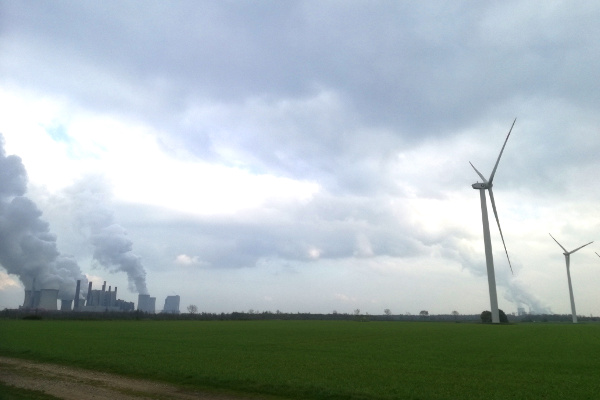The experience with nuclear energy and hard coal shows the way for the energy transition.
Among the coal power plants in the European Union, Neurath rates second – both in installed capacity and CO2 emissions. The newest units of the lignite-powered plant in North Rhine-Westphalia are expected to operate until 2055.
A few kilometres away, there is a spoil heap of Garzweiler II, a lignite mine, which used to be one of Germany’s largest. Now it hosts a test site for a new generation of wind turbines with a view on Neurath. North Rhine-Westphalia operates thousands of wind turbines.
This is the German paradox: The Energiewende country still relies on coal power capacities. But a debate on coal phase-out gained a new momentum in Germany and across Europe as Bonn, North Rhine-Westphalia, hosts COP23 and Berlin, Germany’s capital, the coalition talks.
The most crucial point
“Germany has been seen for a long time as a model boy for energy transition, but the old model opposes it more and more violently,” says Jürgen Döschner, veteran journalist and energy expert at the public radio WDR. The “old model’ includes companies operating coal power plants, he told journalists at a press trip funded by German government’s European Climate Initiative.
According to Döschner, “coal phase-out is the most crucial point in the coalition talks”. Following the September Bundestag elections, CDU/CSU, FDP and the Greens have negotiated on the new government.
The Greens request a plan to close all coal power plants. It is the Greens’ red line. “There will be a coal phase-out plan or there will be no coalition,” Döschner says.
Strange bedfellows
Coal and renewable energies are strange bedfellows in Germany. As operators follow the 2011 decision to phase out nuclear energy and integrate weather-dependent renewables, they see coal as a reliable source ensuring the stability of the grid.
In 2016, 40 percent of gross power production came from coal. Sole lignite provided 23 percent. The Energiewende pioneer state, Rhineland and Palatinate, imports 30 percent of its electricity, many of which comes from North Rhine-Westphalia’s coal power.
The coal phase-out is also a social issue. The lignite industry employs 20,000 people in Germany.
The nuclear blueprint
But Döschner believes the coal phase-out does have a blueprint in Germany: the fate of the nuclear energy. The lesson to be taken is, according to him, that “you have to start discussions with all participants early enough.”
The end of nuclear energy in 2022 was initially decided by the German government in 2000. In 2010 it rolled back the plan only to resume it after the Fukushima accident in 2011. “The companies had 22 years to organize the nuclear phase-out.
With coal power, we are discussing 2030. It can be managed, if we decide now,” Döschner suggests.
According to him, the political decision is very important, because it sets the framework for companies and workers.
The hard-coal experience
Döschner reminds that Germany has experience with hard coal production phase-out, too. It will close the last mine next year.
The hard coal phase-out is “generally considered successful as the economic fundamentals in the Ruhr area … have improved markedly – albeit only after years of efforts and billions of Euros in support. This already shows that structural policy should not be pursued with unrealistic expectations. It cannot create a prosperous and diversified economy over night,” E3G’s just transition expert Julian Schwartzkoff wrote in an op-ed at EurActiv.com.
There is also a lesson not to take: the failed effort to revitalize the hard coal industry in 1970s show the new jobs have to be sustainable on the long term.
Proving Europe’s ambition
“Maybe the most important lesson to be learnt from the German experience is to plan the transition out of coal proactively, rather than react to unfolding events,” Schwartzkopff echoes Döschner’s words.
And indeed, while Germany hesitates, other countries are acting. In late October, Italy’s industry minister said the country would phase out coal power by 2025 in line with a new energy strategy. Plans to phase out coal had been announced earlier by Portugal, Netherlands and the United Kingdom.
A certain, but not fully satisfactory proof of Europe’s determination as COP23 kicks off debates on the implementation of Paris Agreement in Bonn, North Rhine-Westphalia.

 __
__
 _
_
 _
_ _
_